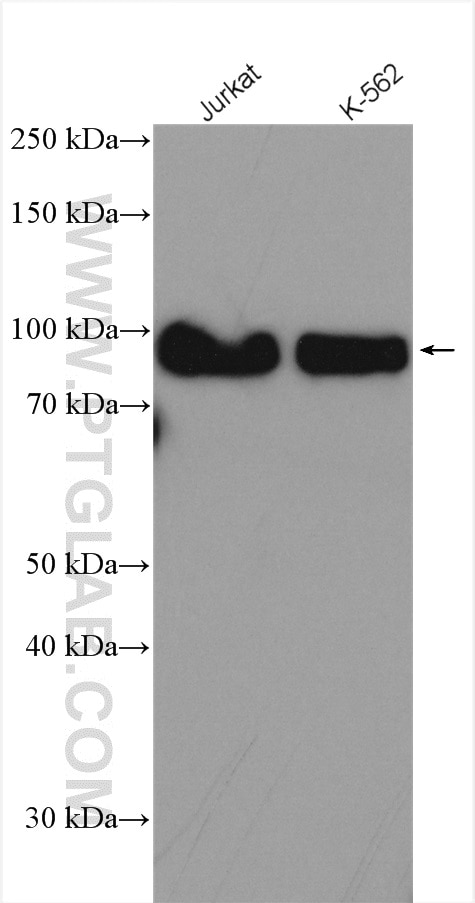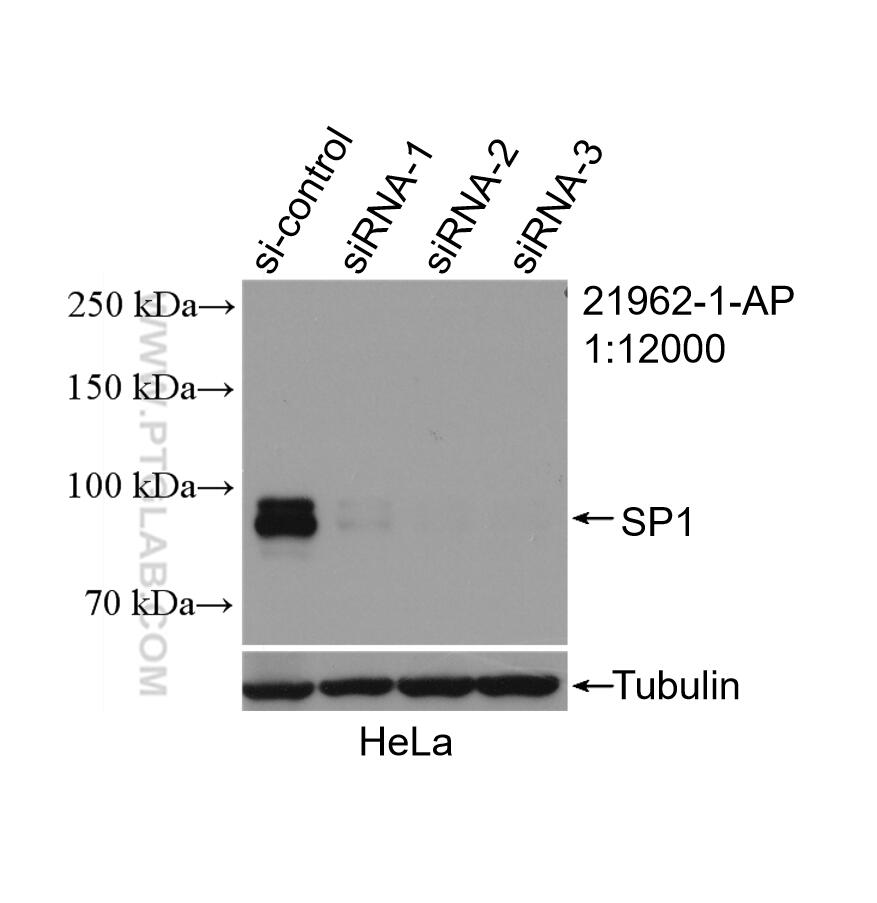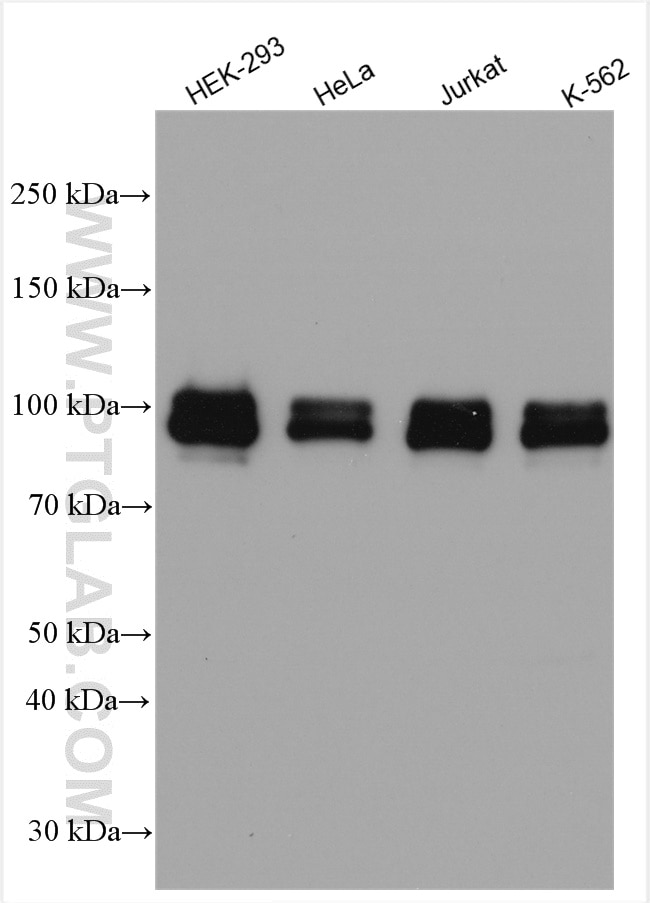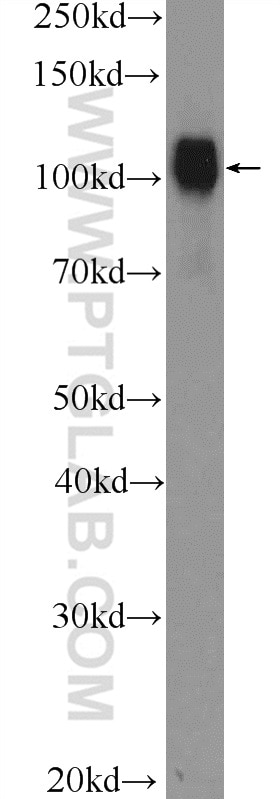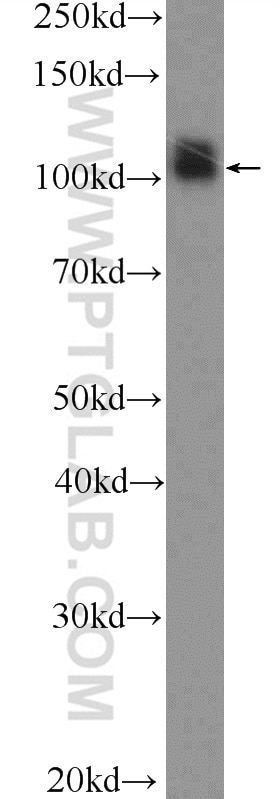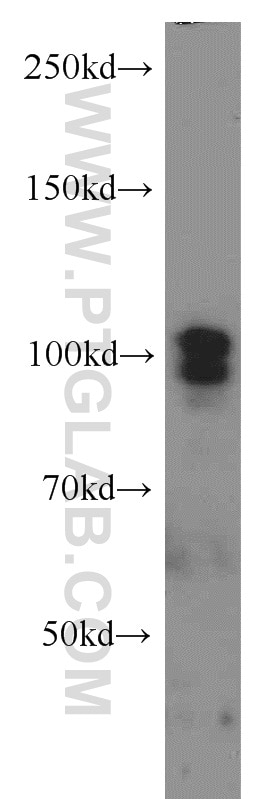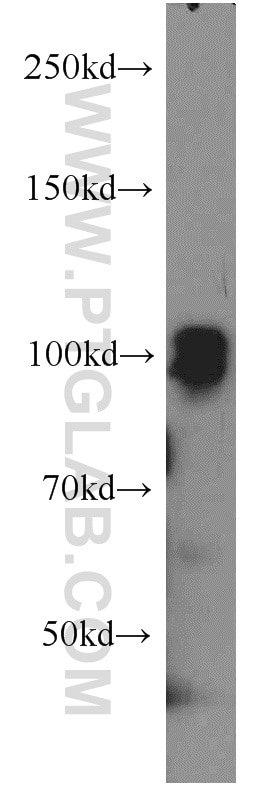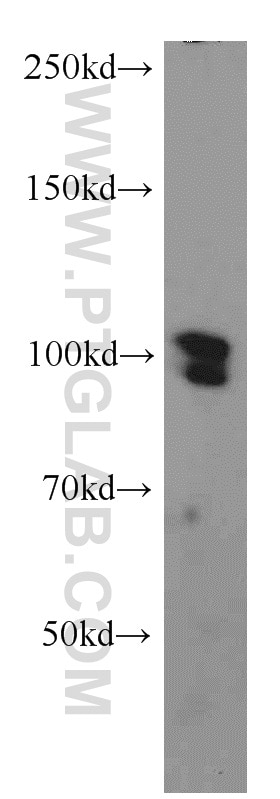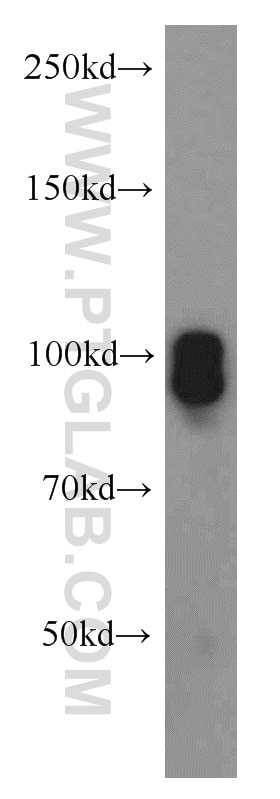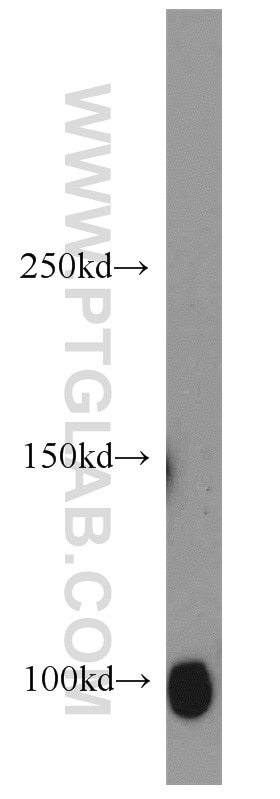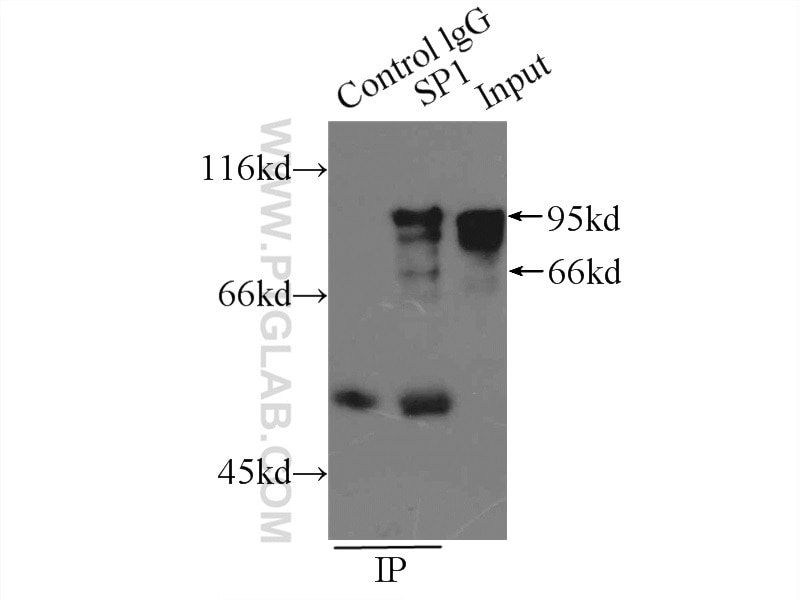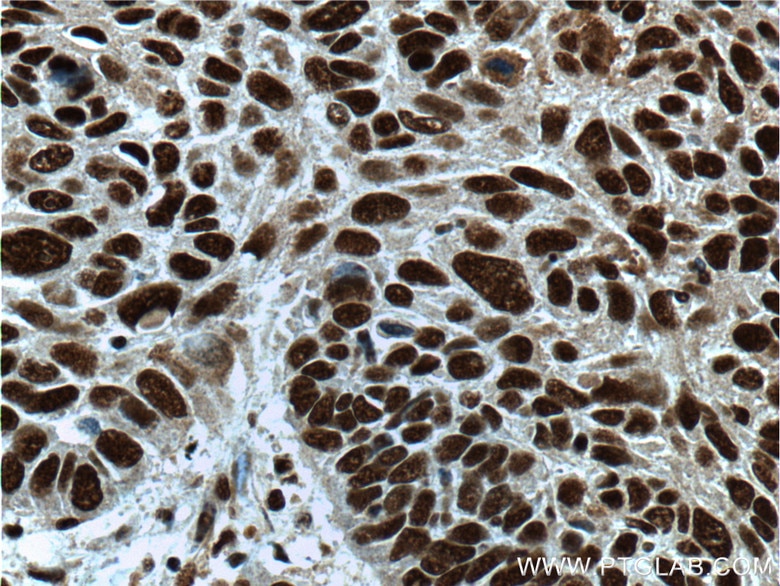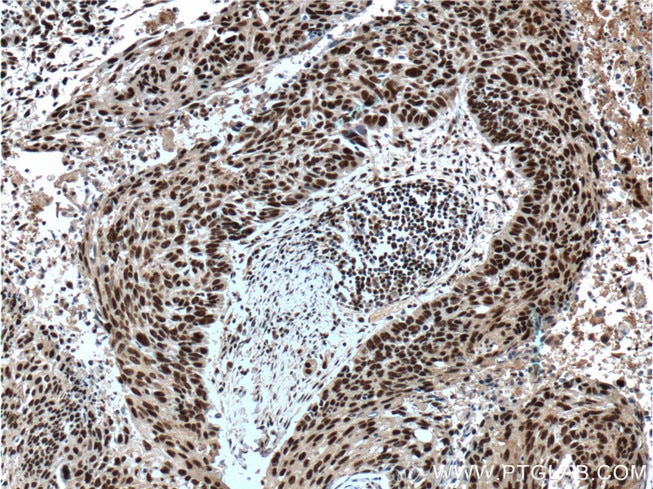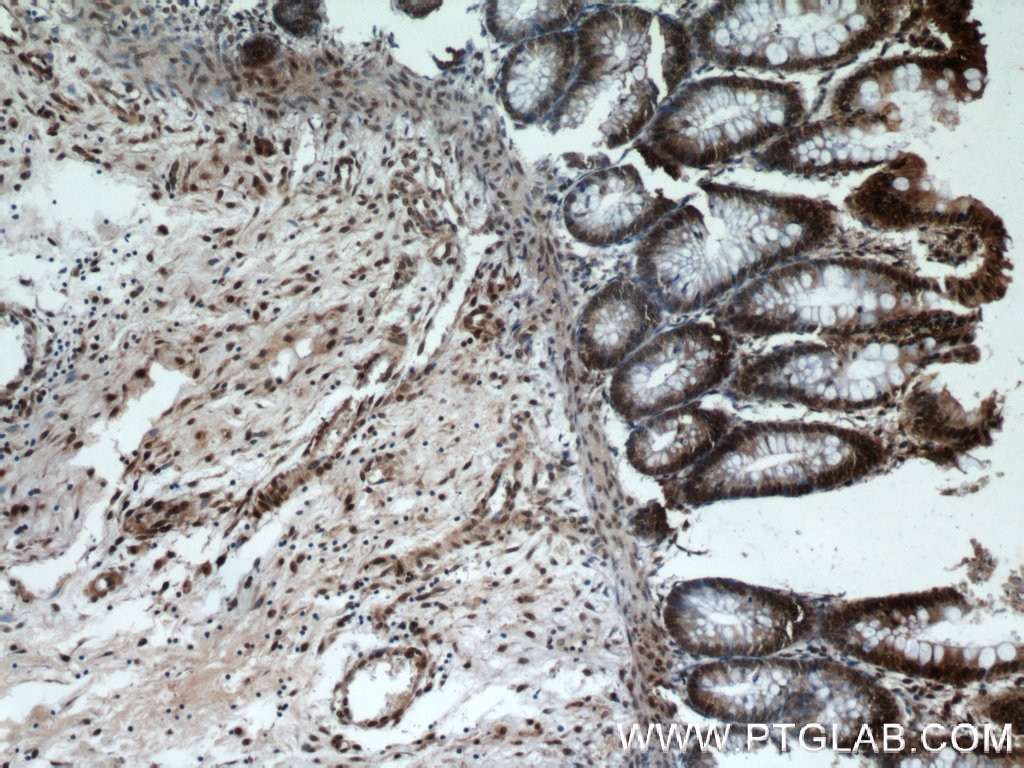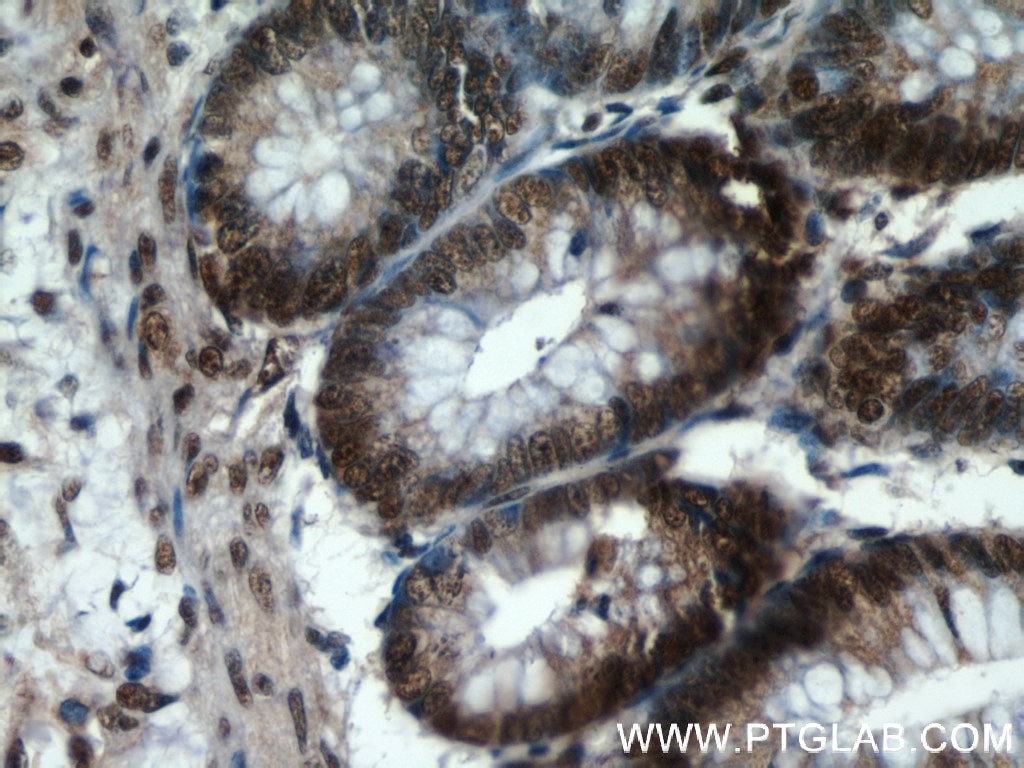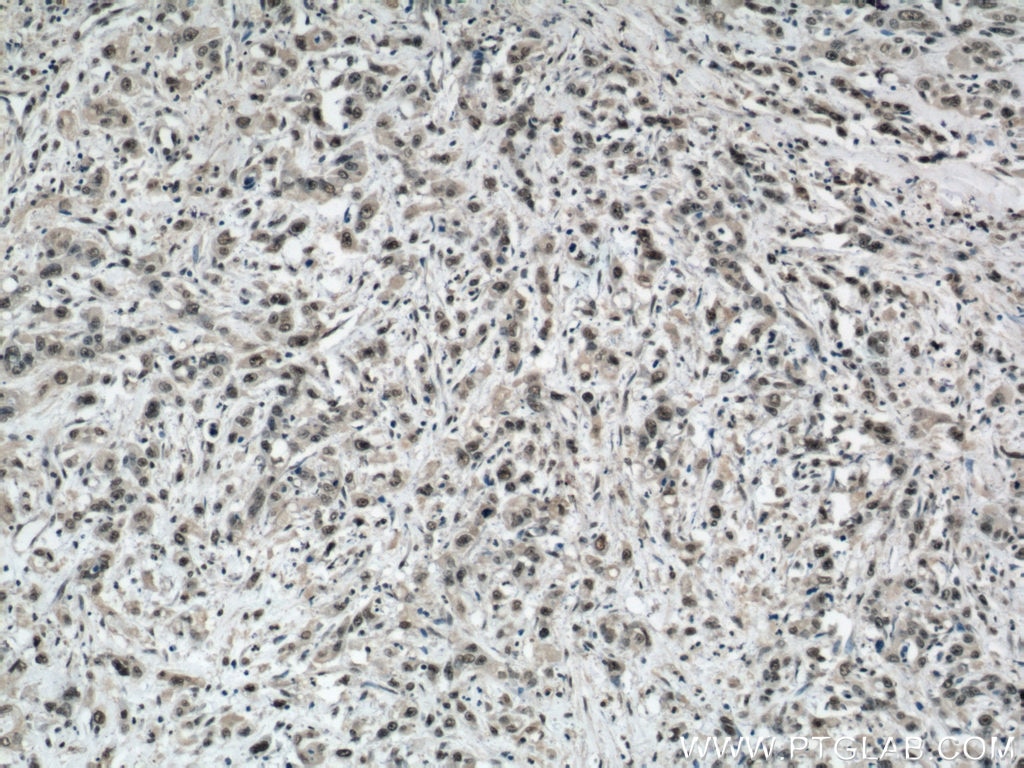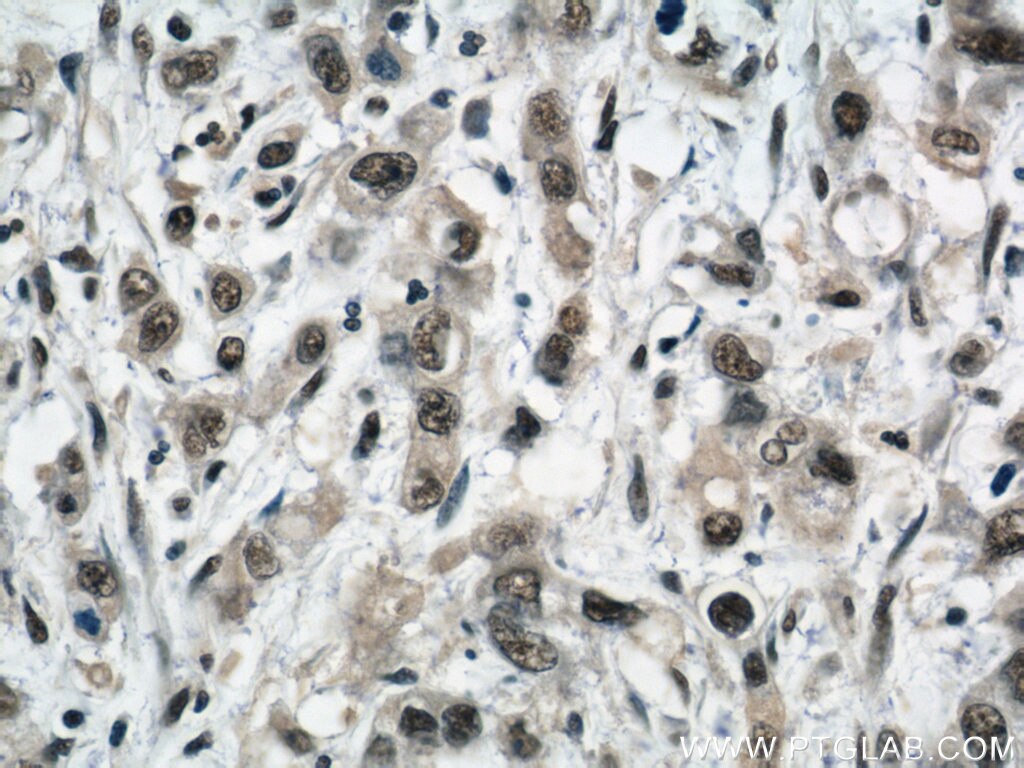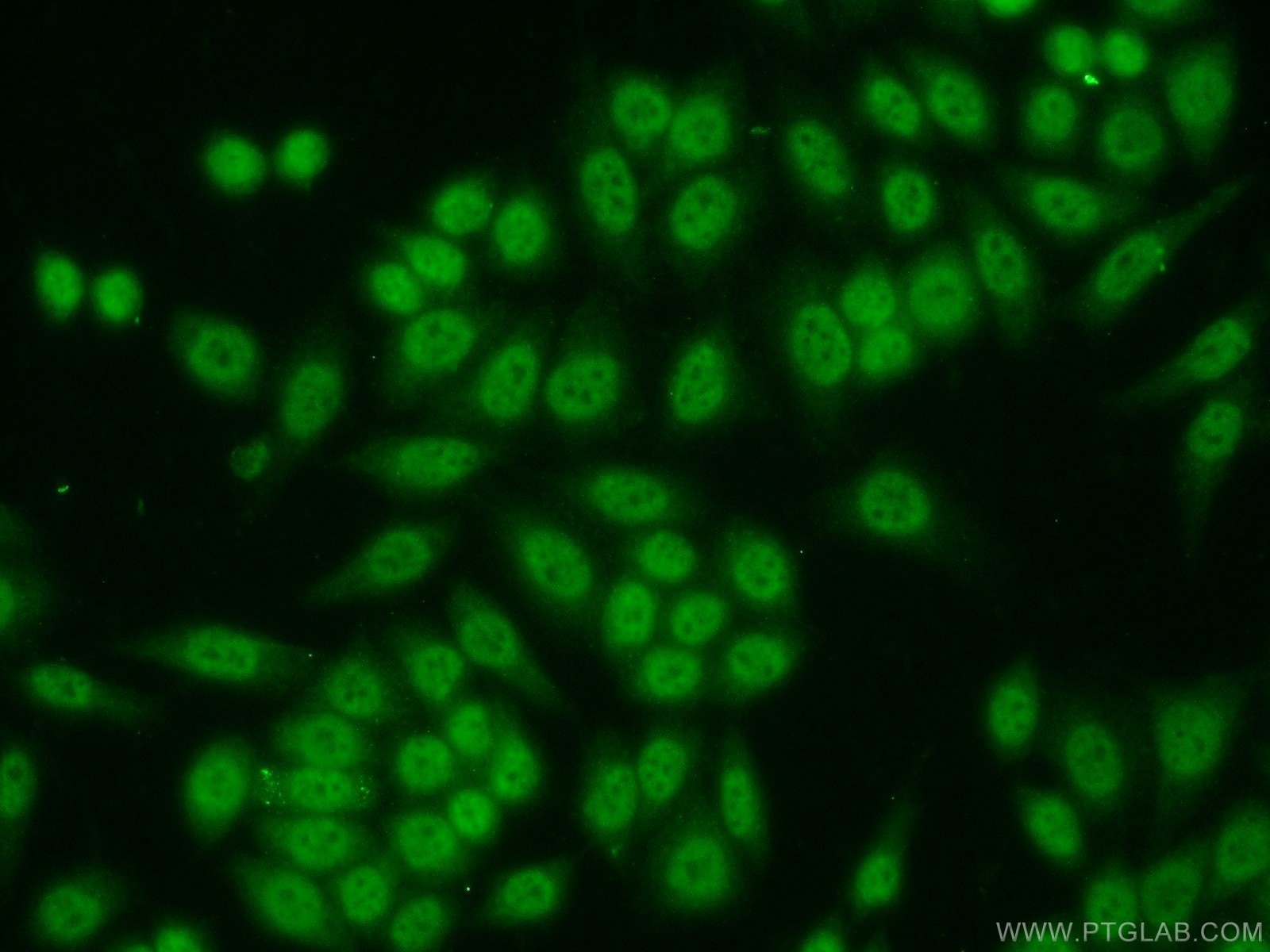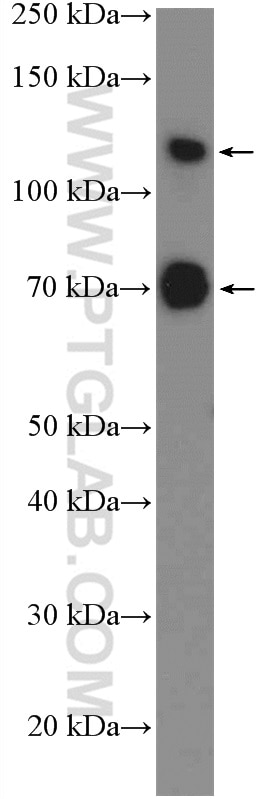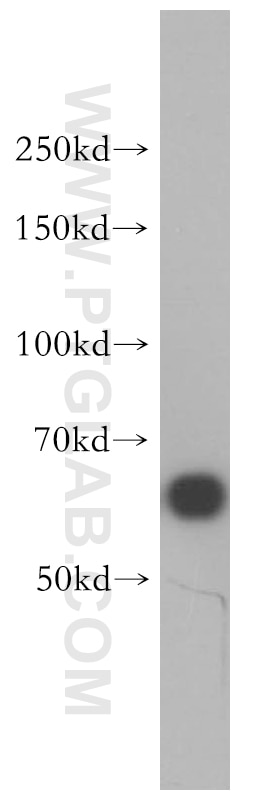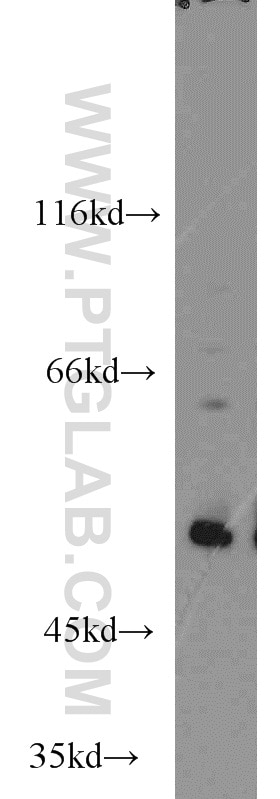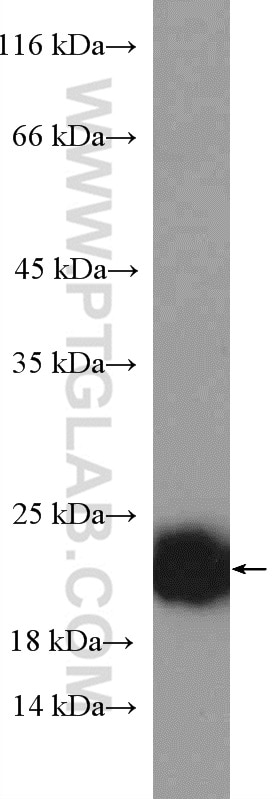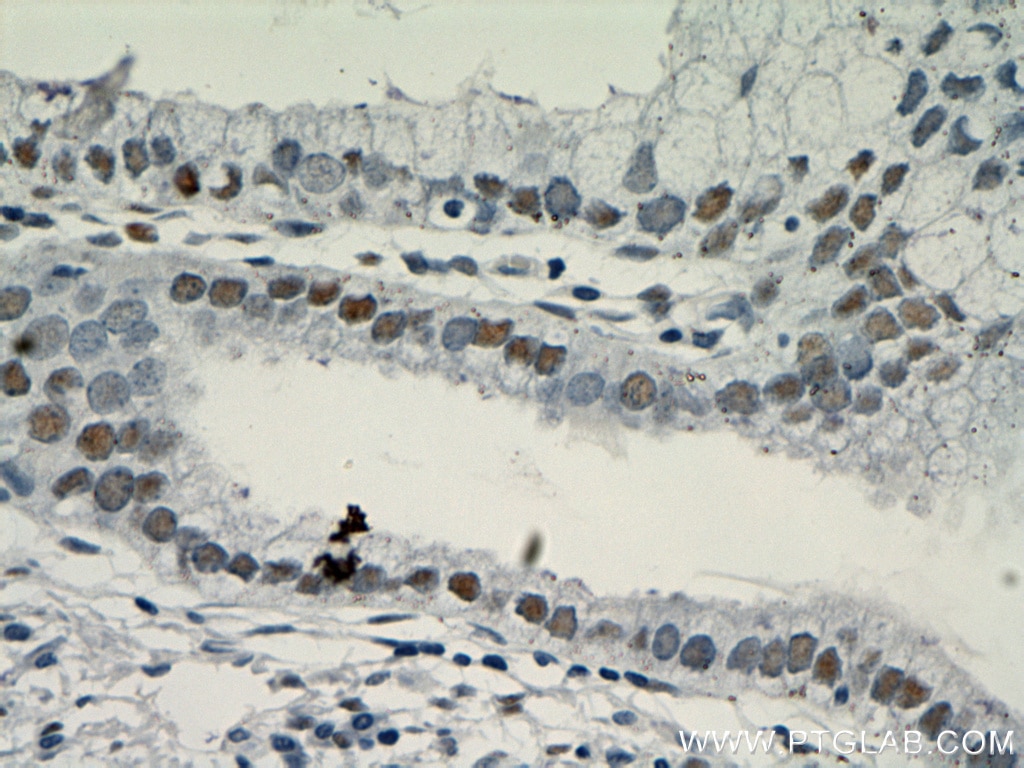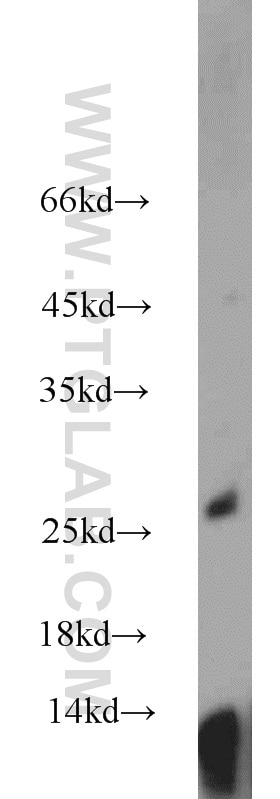- Phare
- Validé par KD/KO
Anticorps Polyclonal de lapin anti-SP1
SP1 Polyclonal Antibody for WB, IP, IF, IHC, ELISA
Hôte / Isotype
Lapin / IgG
Réactivité testée
Humain, rat, singe, souris et plus (1)
Applications
WB, IHC, IF/ICC, IP, CoIP, ChIP, ELISA
Conjugaison
Non conjugué
101
N° de cat : 21962-1-AP
Synonymes
Galerie de données de validation
Applications testées
| Résultats positifs en WB | cellules Jurkat, cellules A431, cellules HEK-293, cellules HeLa, cellules K-562 |
| Résultats positifs en IP | cellules A431 |
| Résultats positifs en IHC | tissu de cancer du poumon humain, tissu de cancer de l'estomac humain, tissu de côlon humain il est suggéré de démasquer l'antigène avec un tampon de TE buffer pH 9.0; (*) À défaut, 'le démasquage de l'antigène peut être 'effectué avec un tampon citrate pH 6,0. |
| Résultats positifs en IF/ICC | cellules HeLa |
Dilution recommandée
| Application | Dilution |
|---|---|
| Western Blot (WB) | WB : 1:2000-1:16000 |
| Immunoprécipitation (IP) | IP : 0.5-4.0 ug for 1.0-3.0 mg of total protein lysate |
| Immunohistochimie (IHC) | IHC : 1:50-1:500 |
| Immunofluorescence (IF)/ICC | IF/ICC : 1:20-1:200 |
| It is recommended that this reagent should be titrated in each testing system to obtain optimal results. | |
| Sample-dependent, check data in validation data gallery | |
Informations sur le produit
21962-1-AP cible SP1 dans les applications de WB, IHC, IF/ICC, IP, CoIP, ChIP, ELISA et montre une réactivité avec des échantillons Humain, rat, singe, souris
| Réactivité | Humain, rat, singe, souris |
| Réactivité citée | rat, Humain, porc, singe, souris |
| Hôte / Isotype | Lapin / IgG |
| Clonalité | Polyclonal |
| Type | Anticorps |
| Immunogène | SP1 Protéine recombinante Ag16720 |
| Nom complet | Sp1 transcription factor |
| Masse moléculaire calculée | 785 aa, 81 kDa |
| Poids moléculaire observé | 95-106 kDa |
| Numéro d’acquisition GenBank | BC062539 |
| Symbole du gène | SP1 |
| Identification du gène (NCBI) | 6667 |
| Conjugaison | Non conjugué |
| Forme | Liquide |
| Méthode de purification | Purification par affinité contre l'antigène |
| Tampon de stockage | PBS avec azoture de sodium à 0,02 % et glycérol à 50 % pH 7,3 |
| Conditions de stockage | Stocker à -20°C. Stable pendant un an après l'expédition. L'aliquotage n'est pas nécessaire pour le stockage à -20oC Les 20ul contiennent 0,1% de BSA. |
Informations générales
The transcription factor Sp1 is a C2H2 zinc-finger protein that is involved in the regulation of a wide variety of genes, including housekeeping genes and tumor-developing genes. It is associated with tumor development, growth, and metastasis [PMID: 16209919]. It regulates the expression of a large number of genes involved in a variety of processes such as cell growth, apoptosis, differentiation and immune responses. Besides, it has a role in modulating the cellular response to DNA damage, recruiting SMARCA4/BRG1 on the c-FOS promoter, regulation of FE65 gene expression [PMID:11371615,16332679]. SP1 is detected with MW 95-105 kDa and 65 kDa in this paper(PMID: 10618488).
Protocole
| Product Specific Protocols | |
|---|---|
| WB protocol for SP1 antibody 21962-1-AP | Download protocol |
| IHC protocol for SP1 antibody 21962-1-AP | Download protocol |
| IF protocol for SP1 antibody 21962-1-AP | Download protocol |
| IP protocol for SP1 antibody 21962-1-AP | Download protocol |
| Standard Protocols | |
|---|---|
| Click here to view our Standard Protocols |
Publications
| Species | Application | Title |
|---|---|---|
Cell Res Hepatocellular carcinoma redirects to ketolysis for progression under nutrition deprivation stress. | ||
Cell Rep Med Disruption of MerTK increases the efficacy of checkpoint inhibitor by enhancing ferroptosis and immune response in hepatocellular carcinoma | ||
Nucleic Acids Res High mobility group AT-hook 1 (HMGA1) is an important positive regulator of hepatitis B virus (HBV) that is reciprocally upregulated by HBV X protein. | ||
Drug Des Devel Ther Sichen Formula Ameliorates Lipopolysaccharide-Induced Acute Lung Injury via Blocking the TLR4 Signaling Pathways | ||
EMBO J AKT2 reduces IFNβ1 production to modulate antiviral responses and systemic lupus erythematosus. |
Avis
The reviews below have been submitted by verified Proteintech customers who received an incentive forproviding their feedback.
FH Anh (Verified Customer) (07-15-2021) | have some unspecific bands
 |
FH Hannah (Verified Customer) (06-08-2020) | Single band at predicted size with with 2 minute exposure
|
FH David (Verified Customer) (01-15-2020) | Gave a single clear band at the expected molecular weight. Low protein input was used (10µg) for experimental reasons, hence the low antibody dilution required (1:100).
|
